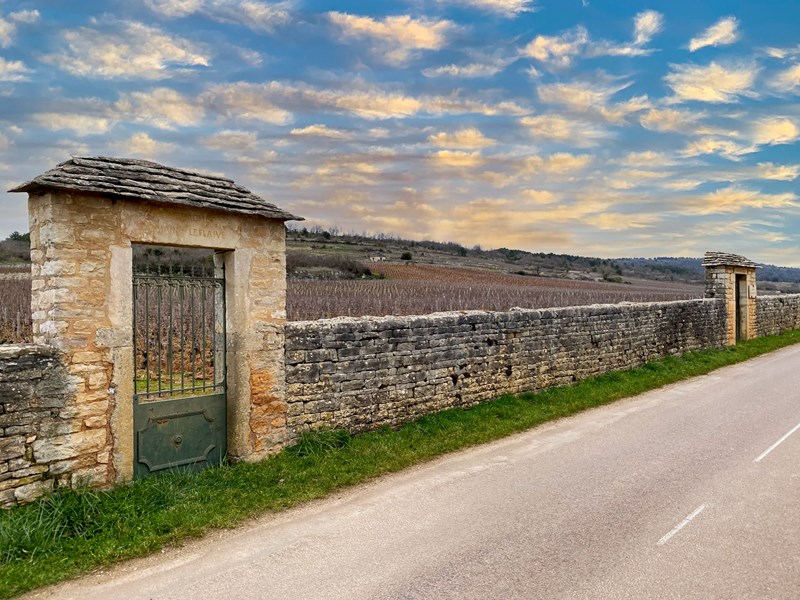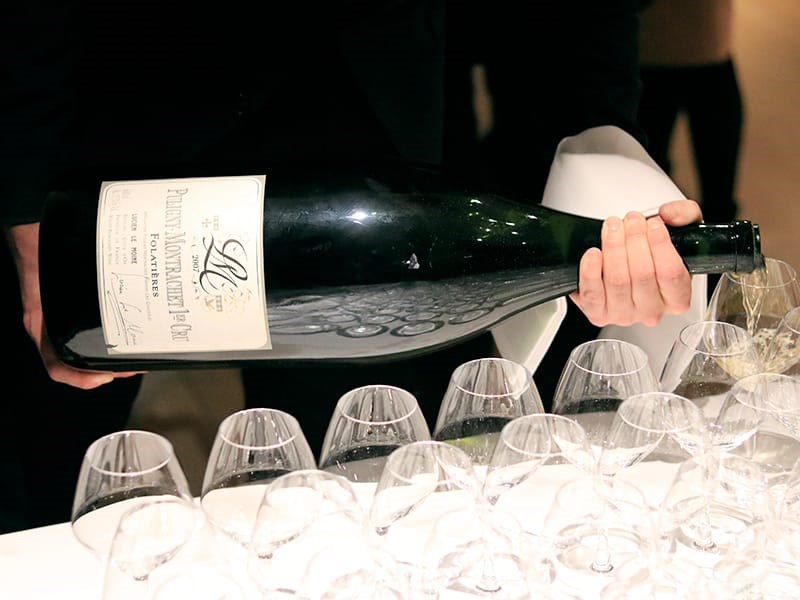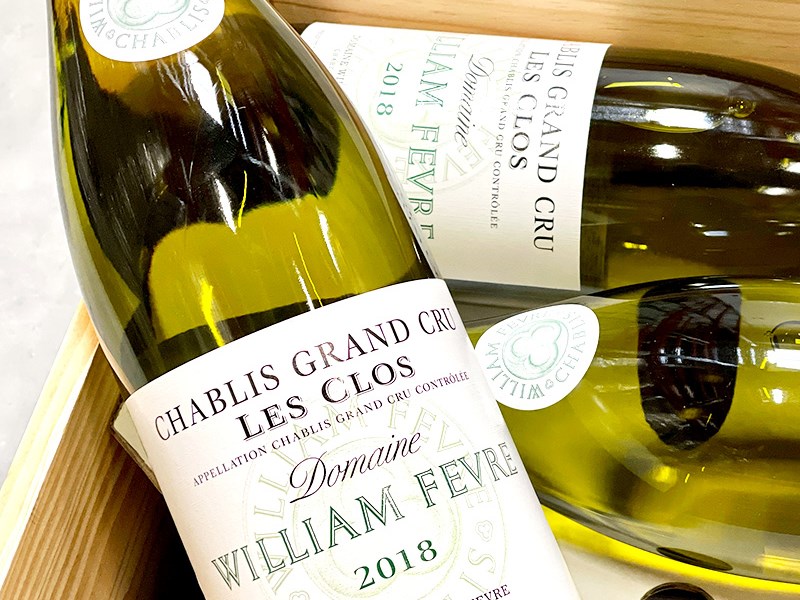Article - RareWine Academy
The Top Of White Burgundy Is Characterized By Magical Taste And Perfect Production
Some of the world's best white wines come from Burgundy. Read on to find out why they are enjoying praise and massive demand.
White, Burgundy Grand Cru
Burgundy is admired by many. It is a simple and complex area, where everything is mapped down to the finest detail, and nothing is left to chance. The best wines from Burgundy can be magical, and few regions can match the same high level. Quality has only increased in recent years, and demand is likewise on the rise.
Especially the red wines attract attention, but in recent years, there has been an increased interest in the whites. In this article, the top white Burgundies are examined - in particular the appellations with Grand Cru classification
Burgundy And Pre-Oxidation: The Ghost Of The Past
It is worth addressing the elephant in the room right away. After all, it is difficult to talk about white Burgundy without mentioning the ghost of pre-oxidation. Pre-oxidation basically means that the wine is oxidised before its time. A wine that has lost its primary fruit before time appears with low freshness and heavy notes of nuts and overripe fruit.
For decades, pre-oxidation has ruined several good wines from the best vineyards and the best producers in Burgundy. The best producers from Domaine Leflaive to Lafon have had these problems, and research has pointed to too much or too little oxygen to the wine in the cellar as the cause. Incorrect corks or the faster ripening of the grapes in the vineyard can also be the cause of pre-oxidation.
The reason for the increasing interest in white Burgundy these years is that producers seem to have got a much better grip on this harmful phenomenon. Many have changed cellar practices back to the routines of the past. Domaine Leflaive has acquired new suppliers of corks, and in this way, most producers have adjusted to eliminate the problem. As a result, the wines are once again able to develop in the bottles and reach their maximum potential when they reach their peak.
Today, the wines are at an even higher technical level than those produced back in the 1970s. Winemakers simply know more about what they should and should not do in both vineyard and cellar.
 Domaine Leflaive - Montrachet
Domaine Leflaive - Montrachet
White Burgundy Tastes Magical
What makes white Burgundy so appealing to wine lovers is based on a few things. It can be compared to a plate, where very few ingredients produce an amazing complexity and harmony. White Burgundy is made from Chardonnay, a grape that optimally expresses the terroir in which it is grown.
In Burgundy, where the origin of the grapes plays a huge role, Chardonnay is the perfect "medium" to bring out the expression in the wine. The final expression of the wine will also be very different depending on how the winegrower chooses to grow his plants in the vineyard. There is a big difference in dense planting, high foliage and pruning during the season, and especially the harvest time of the grapes.
In addition, it is essential to look at how much it matters that the vineyard is cultivated according to the most sustainable principles possible. This could be anything from sustainable to organic, or biodynamically certified. The Queen of Burgundy; Madame Lalou Bize-Leroy has no doubt that biodynamics is the only way to bring out the full expression from the grapes. Looking at her wines, it could well be that she knows what she is talking about. The almost irrepressible approach to biodynamic production is gaining ground among other producers in the area.
The Production Of White Burgundy
The wine cellar offers many possibilities for the winemaker, and many of these possibilities will of course influence the quality of the wine. When it comes to Grand Cru wines, the winemaker will always choose the best and often most expensive option to get the best expression in the glass.
Planting with the best clones and high planting density are important elements in the production of top wines. If the winemaker has old vines, he will take care of them and enjoy the better but fewer grape clusters available. Harvesting will be done by hand - often with pickers who can do first-pick in the vineyard.
A further sorting will typically take place on arrival at the winery, after which the grapes are fermented naturally – usually in open wooden barrels. Then ageing in new barrels, specially selected from the winemaker's favourite barrel-makers. Bottling usually takes place after just under two years, and then the wine must be allowed to develop in bottle to bring out the final nuances.
One of the reasons why Burgundy differs from other wine regions is especially this development in the bottle. The very best wines become more complex with age and achieve great depth, raising the bar to the very top.
The young wines are good – the mature ones are sublime.
 Puligny Montrachet
Puligny Montrachet
The Areas Of Grand Cru
In Burgundy, both Pinot Noir and Chardonnay can be grown almost everywhere. However, there are differences in where they perform optimally, and therefore a dividing occurs. However, there are always exceptions that prove otherwise. Most Chardonnay is planted in the Cote de Beaune and most Pinot Noir in the Cote de Nuits.
The only white Grand Cru in the Cote de Nuits is Musigny, produced by Comte de Vogue from 0.5 hectares of this legendary vineyard: the exception that proves the rule. In addition, Chablis should not be forgotten, which lies to the north in a significantly cooler climate and produces wines with a different rank.
In the Cote de Beaune, the Corton hill is the most northerly, and here, Grand Cru is produced. Further south is Montrachet and the vineyards around it, which also have Grand Cru classification.
Chablis
Further north, Chablis is a small enclave away from the rest of Burgundy, since there are no planted vineyards between the two places anymore. However, Chablis has such a unique terroir that its fame is more than justified.
There is only one Grand Cru appellation in Chablis, which covers all seven vineyards producing Grand Cru wines. In total, this appellation covers just under 100 hectares. These vineyards are located on the right side of the river Serein, where they have a perfect exposure to the water. The wines from here have a richness and precision that is more prominent than in the south.
For decades, the best producers have been led by Dauvissat and Raveneau, who both make extremely long-lasting wines. In recent years, however, several producers have moved up to the top of the first division - just below the two leaders. Worth mentioning are William Fevre, Billaud-Simon and Christian Moreau, which may be worth keeping an eye on in the coming years. Add here La Moutonne from Domaine Log-Depaquit, which is the eighth Grand Cru to come from a Monopole parcel that crosses the border between Vaudesir and Les Preusses.
Corton
Corton covers the entire slope around the Corton hill with the classic forest on top placed as a kind of landscape hat just at the entrance to the Cote de Beaune south of the Cote de Nuits. There are Grand Cru appellation vineyards here for both red and white wines, and the appellations overlap slightly.
Among the white wines, Chardonnay is the predominant grape. Up until 1948, Aligoté was allowed to be planted, which is why there are still small plantations of it on certain parts of the hill. It is not something producers talk much about, but some producers enjoy that Aligoté can add a touch of higher acidity naturally to their Charlemagne.
Corton-Charlemagne is the general appellation for the white Grand Cru wines from Corton. It covers 71.88 hectares, including several climats. Climats are subdivided parcels, each possessing its terroir and expressing itself differently in the end. There are several of these climats that are allowed to be used on the label, but this is only seen in a few cases. Le Corton, Le Charlemagne and En Charlemagne are the best known.
The style of these wines is razor sharp and precise in their expression with a precise minerality and a vibrant structure that can give most people goosebumps. These are wines with depth and a great ageing potential.
The Producers Of Corton-Charlemagne
Louis Latour is the largest landowner in Corton-Charlemagne with more than 10 hectares. Bonneau du Martray is the second largest with 6.48 hectares and owns the 2.91 hectares that Domaine de la Romanée-Conti leases from them.
The most iconic wines from here are Coche-Dury from a parcel of just 0.88 hectares, and of course from Domaine Leroy, which always gets high scores from critics. Another wine from this appellation is from George Roumier, who has 0.20 hectares. Here, he makes his only white wine, which is neither typical Corton-Charlemagne nor appears like a typical wine from Roumier. A quirky wine that any Roumier fan would want to taste.
Montrachet And The Legend Of Its Name
Montrachet is widely recognised as the world's best Chardonnay vineyard. Next come the five other Grand Cru classified vineyards, all of which have the Montrachet suffix attached to them.
According to legend, the King of Mount Rachet (MONTRACHET) sent his son - the knight (CHEVALIER-MONTRACHET) - to fight in the Crusades. While his son was away, the king had an illegitimate son (BATARD-MONTRACHET). The son died in battle, so the locals welcomed the bastard son by saying hello (BIENVENUE-BATARD-MONTRACHET). Unfortunately, the bastard son cried a lot, so he was nicknamed CRIOTS-BATARD-MONTRACHET, because criots means: "to get wet eyes".
Montrachet Or Le Montrachet?
When referring to the mighty Montrachet, it is not the size that is referred to, but the fact that it is one of the world's most mythical vineyards. The vineyard itself is only 7,998 hectares divided almost equally between the villages of Puligny-Montrachet and Chassagne-Montrachet. Formally, the Puligny part is called Montrachet and the Chassagne part Le Montrachet, but this is rarely seen on labels. The whole vineyard is perfectly exposed to the sun, sloping to the south and south-east. The top soil in distinguishes Montrachet from other good vineyards - both in terms of composition and density.
Today, there are 16 owners at Montrachet, a few of whom also sell to negociants. This means that there could be more wines on the market than the 16 owners. Remoissenet, for example, has for many years been recognised for their Montrachet purchased from Domaine Thenard.
It is quite unique to have real Montrachet in the glass - both in terms of taste and fragrance universe. There is an extra layer on all parameters, more fullness, more intensity, more finesse, and more length. Everything achieves absolute balance and makes a glass of Montrachet stick in the memory.
There are no bad producers in the vineyard, and all of them take great pride in the fact that their Montrachet always appears at its best. A few producers, however, stick their heads a little higher above the vineyard with Domaine Leflaive, Ramonet and Domaine de la Romanée-Conti leading the way.
Chevalier-Montrachet
Chevalier-Montrachet is widely recognised as the best of the other Montrachets. Chevalier, with 7.5 hectares, is located further up the slope in Puligny-Montrachet. The style of Chevalier is obviously very similar to Montrachet, but the higher elevation and thinner top soil produce wines with greater minerality and slightly less depth.
The two main landowners are Domaine Leflaive and Bouchard Père et fils. The wines of Chevalier-Montrachet are often considered to be on a par with Montrachet in terms of quality, although the style is different.
The most coveted wine from here is Domaine d'Auvenay from a parcel of 0.16 hectares. Madame Lalou Bize-Leroy owns no better vineyard for white wine, and this one regularly hit zenith. Domaine Chartron and Leflaive, however, are not far behind on quality.
Batard-Montrachet
Perhaps a bastard by name, but in reality, a full-blown vineyard with great personality and excellent wines as a result. With almost 12 hectares, it is also the largest Grand Cru in the Montrachet collection, which also leads to greater diversity in quality. The land is split between Chassagne and Puligny-Montrachet, just across the little road below Montrachet.
There are a few meters down from the road to the first vines, which is why part of the vineyard is lower than Montrachet. There is deeper soil on top and the wines can appear deeper and heavier than both Chevalier and Montrachet for the same reason.
Domaine Leflaive makes one of the best wines from here and is also the largest landowner with 1.8 hectares. Again, Domaine d'Auvenay should be mentioned with a fabulous wine, as well as Pierre-Yves Colin-Morey, who also has one of his very nice intense wines here.
The secret wine here is Domaine de la Romanée-Conti, which makes a single barrel that is only served to guests of the domain, but unfortunately not sold.
Bienvenue-Batard-Montrachet
This vineyard is almost inside Batard-Montrachet, and there has been discussion of including the wines in this appellation. The vineyard is just under 4 hectares and the wines are different in style. In several cellars, you can taste the difference between the two appellations - Vougeraie, Leflaive and Ramonet for example.
The vineyard manager of Domaine Leflaive says that his horse changes gait when it crosses the border between Batard and Bienvenue. The soil changes the pace. So, despite the close proximity, there is a geological difference that is noticed by the horse. The best producers in this vineyard are Carillon, Bachelet, Ramonet and Leflaive.
Criots-Batard-Montrachet
The huge cry-out comes when you see that the entire vineyard is only 1.57 hectares, so the opportunity to taste this requires hard work. There are not many producers who can enjoy more than one barrel from Criots-Batard-Montrachet, which is why it is difficult to draw comparative tasting notes. The vineyard is located in Chassagne-Montrachet, directly adjacent to Batard-Montrachet.
Bottles from Domaine d'Auvenay should be acquired at almost any price. Caroline Morey also makes a magical wine from here in dizzyingly small quantities.
 William Fèvre - Chablis
William Fèvre - Chablis
The Future Of White Burgundy
The future is undoubtedly bright for white Burgundy. The challenge lies in the fact that the Grand Cru appellations mentioned above in no way can meet the demand that exists in the market. In total, 2 million bottles of Grand Cru Burgundy are produced, of which only 400,000 bottles are white wine. This contributes to the fact that only a few bottles are at the top of the wish list of wine lovers. Daxue Consulting, a consultancy specialising in Chinese market research, also expects demand from the Chinese market for white Burgundies in particular to grow.
In November 2021, Liv-ex wrote an article highlighting that a record number of white Burgundy wines were traded in 2021. In fact, trade in white Burgundy has increased by 1000% in the last decade, with Liv-ex pointing to the US and UK as the biggest markets of all.
Fortunately, the next levels are ready to meet the huge demand. The wines are not quite at the same level, but they are not far behind. At the moment, the Premier Cru wines are particularly good deals. The next step on the ladder comes from the smaller appellations, which are currently delivering many great flavours, without the same complexity as is achieved by the best producers, on the best parcels.
Climate change is of course very important in all wine regions these years. In Burgundy for Chardonnay, it does not have quite the same importance, as this grape just manages to deliver high quality in many different climates. Unfortunately, it cannot protect itself naturally against frost, hail and increasing moisture in the vineyards, so climate change will undoubtedly have an impact in the future.
All that remains is to enjoy the magical flavours, sublime craftsmanship and mastery of the art of winemaking that reigns in Burgundy. There is no doubt that white Burgundy will become even more coveted in the years to come.
